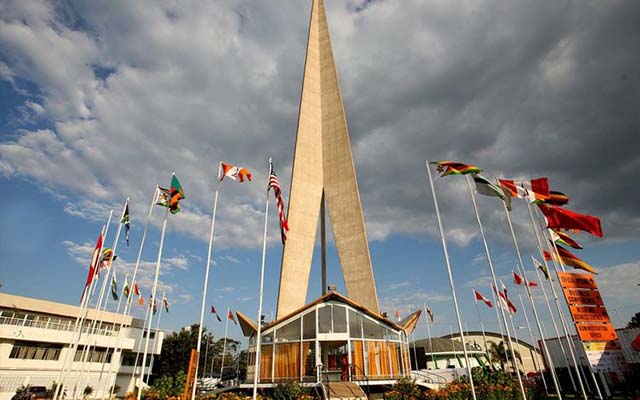Allocate more seed capital to SWF


The Sovereign Wealth Fund Bill seeks to establish a fund whose objective is to reserve income from the country’s mineral resources for the benefit of future generations
In line with the Zimbabwe Agenda for Sustainable Socio-Economic Transformation blue print (Zim-Asset), the Zimbabwean Government recently gazetted the Sovereign Wealth Fund Bill that seeks to establish a fund whose noble objective is to reserve income from the country’s mineral resources for the benefit of future generations.
There is no broad accepted definition of what a Sovereign Wealth Fund (SWF) is. However, many Government funds fall under the category.
SWFs are most common in resource-rich countries and usually serve two purposes. The first use of SWFs is for stability of Government revenue during periods of fluctuations in commodity prices.
When commodity prices are high, governments set aside some of the money from commodity sales, and when prices are weak, this is injected back into government’s fiscal revenues.
The second use of sovereign wealth funds is to have a national savings fund in order to have something left over once the commodity runs out or is no longer in demand.
It is done to benefit future generations and to avoid “Dutch disease”. Dutch disease or the “paradox of plenty” has been used to describe how being a resource-rich country can result in the death of the economy as all the resources are moved into the commodity rich sector and as a result, other sectors, such as manufacturing and agriculture are starved of resources.
This decline in other sectors can be compounded by the increased volume and contribution of exports from commodities to the economy and will force the local currency to appreciate, making goods and services in other sectors of that economy more expensive and uncompetitive in comparison to imported goods.
Fortunately, Zimbabwe does not face this problem under the current multi-currency regime, but nonetheless uses a currency, which is appreciating against a basket of other regional and international currencies, not as a result of economic activities in Zimbabwe but of the strength of the United States economy.
Although the majority of SWFs are created and funded by exported commodities, some are funded by budgetary surpluses, pension funds or social security savings.
Many countries in South East Asia such as, China, Singapore and Hong Kong, have SWFs funded by budgetary surpluses instead of commodity exports.
The first sovereign wealth fund to be created was in Kuwait in 1953, funded by oil revenues and currently holds assets worth US$350 billion (Over US$100 000 per capita). Royalties were transferred to this fund, which then invested the money globally. Since then, many countries have created their own SWFs.
There has been a lot of media coverage lately about sovereign wealth funds, mainly because of the big exposure of Norway’s SWF which has just reached US$880 billion or US$161 000 per capita and is the largest single SWF in the world. Collectively, this fund could afford to buy approximately 1 percent of every listed company worldwide.
Most SWFs, from commodity sales, are funded by oil exports, however, other commodities have funded SWFs for non-oil producing countries. For example Botswana has a SWF worth US$6,19 billion or approximately US$3 200 per capita.
The Zimbabwe Government is planning to create a sovereign wealth fund with the bill passed and on its way to Parliament to be tabled and debated.
Unlike most SWFs, which usually invest globally in bonds equities and currencies in order to save and grow the wealth, Zimbabwe’s SWF will be used for expenditure related to the roll out of the Zimbabwe Agenda for Sustainable Socio-Economic Transformation, infrastructure and recapitalisation projects.
Government capital expenditures are too low in Zimbabwe and need to rise as a percentage of total Government expenditure.
The proposal includes allocating 25 percent of all royalties on mineral exports to this fund along with special dividends from Government’s stake in the mining industry through Zimbabwe Mining Development Corporation.
Unfortunately, the money allocated to this fund will not be large enough to make a real impact. Let us take platinum for example, which is forecast to produce 14 tonnes of unrefined platinum in 2014.
Let us assume the platinum is refined and the platinum price remains stable at US$1 450 (World Bank Forecast) an ounce throughout 2014, this would mean total revenue from platinum of US$760 million.
The royalties on platinum are 10 percent and the proposed allocation of this is 25 percent giving the contribution from platinum to the fund not exceeding US$20 million.
The allocation from gold would be no more than US$20 million using the National Budget forecasts and the only other significantly contributing sector would be diamonds, which we will not try to estimate but also would not assume that it would be more than US$30 million. Taking this into account, the fund would not be able to raise capital of above US$100 million.
This would be adequate if it was a traditional SWF and was being used for the purpose of saving or for the purpose of significantly augmenting Government revenues from commodity sales.
However, the fund is going to be used for implementing the objectives of medium-term economic policy (Zim-Asset) and the funds, unless targeted very specifically will not have much effect on economic growth in 2014. At just less than 1 percent of GDP and at just 2,84 percent of total Government expenditures up to November 2013 it is just not big enough.
This is a step in the right direction, however, because all what this does, in comparison to a common SWF, is appropriate a portion of the royalties away from recurrent expenditure and towards capital expenditure spending.
Zimbabwe needs a larger portion of Government spending to be moved away from recurrent expenditure, which makes up approximately 70 percent of Government expenditure, and towards infrastructure, recapitalisation spending.
Early reports are that the Reserve Bank of Zimbabwe will be the administrator of the fund and transparency should be a key part of this process.
In our opinion, the Government should allocate more seed capital to the fund from the fiscus, if it is to carry out the objectives in Zim-Asset. However, this seed capital would have to come at the expense of recurrent expenditure.
This article was written by Zimnat Asset Management for FinX










Comments